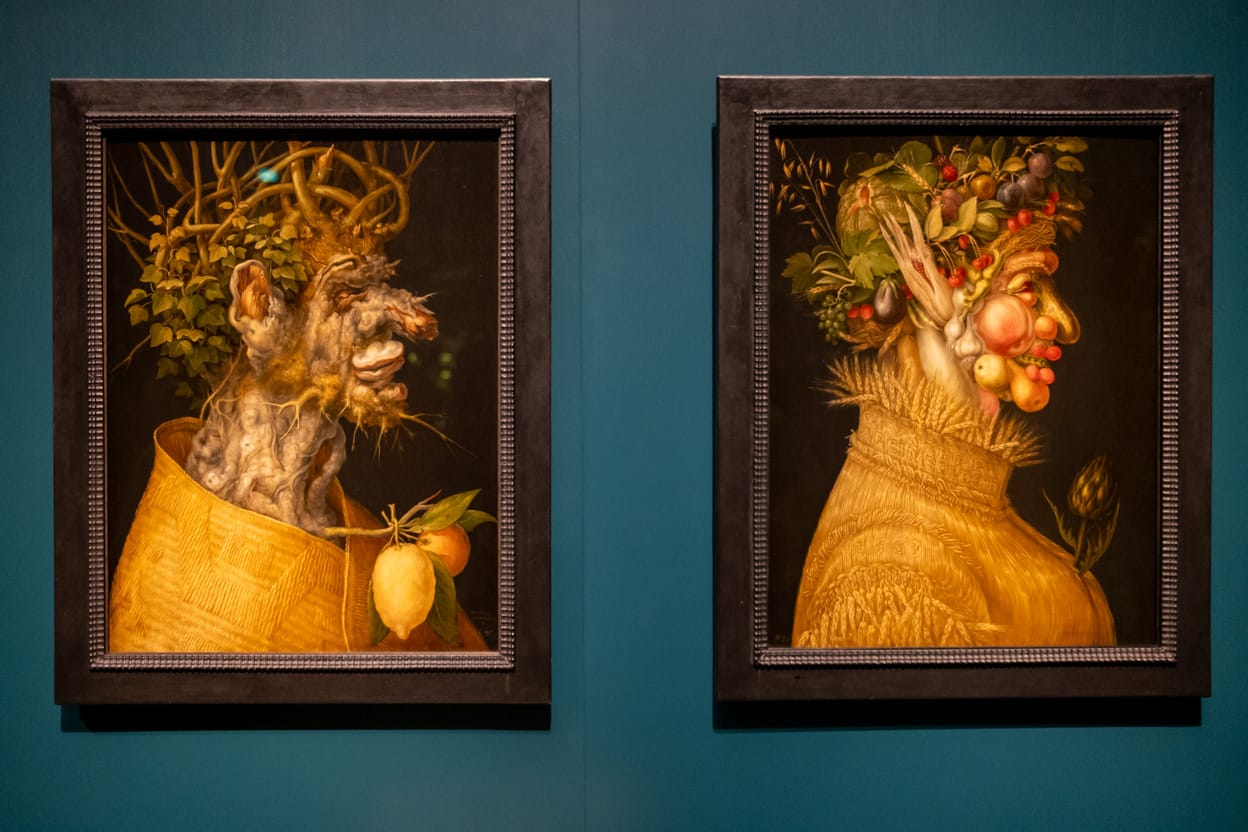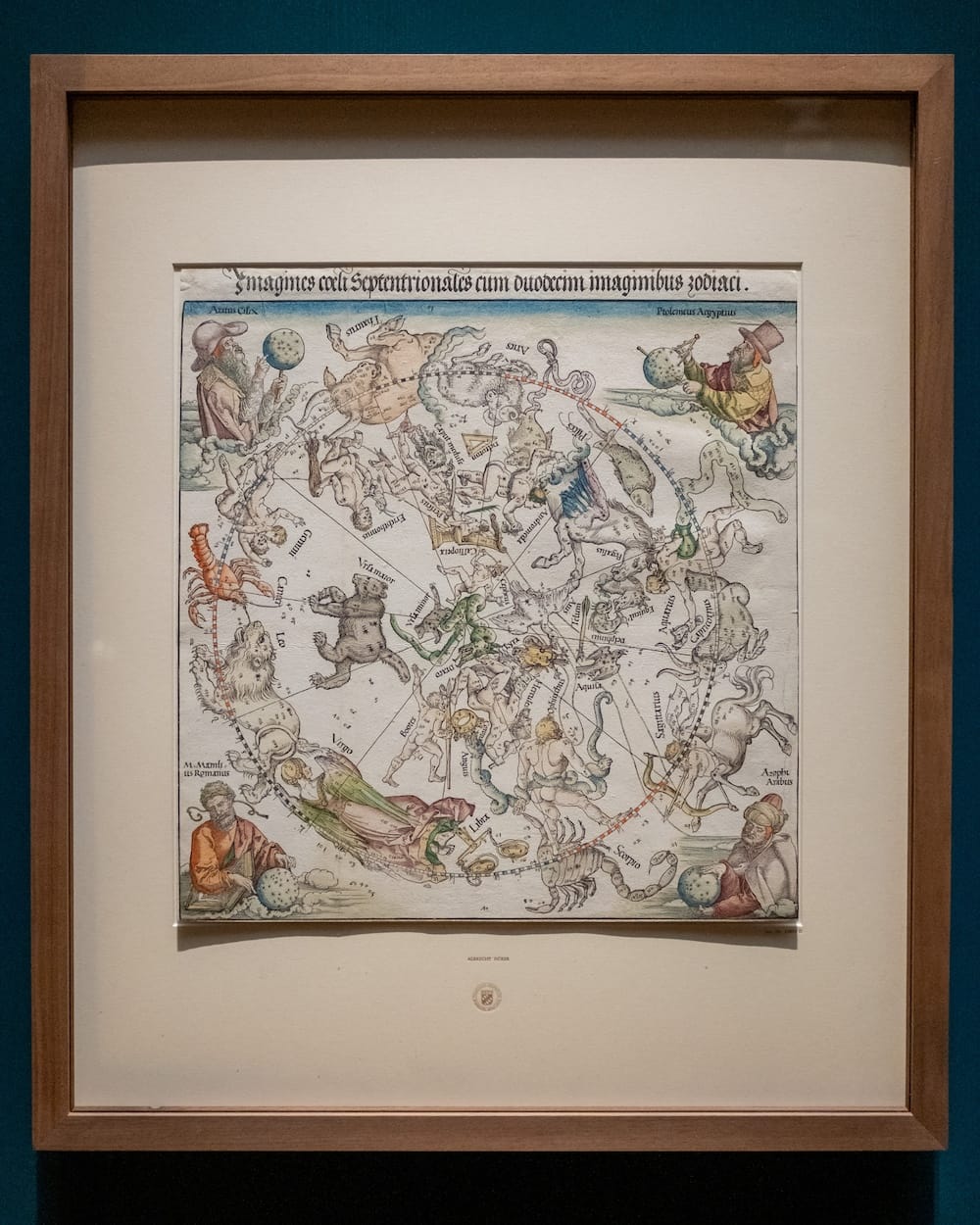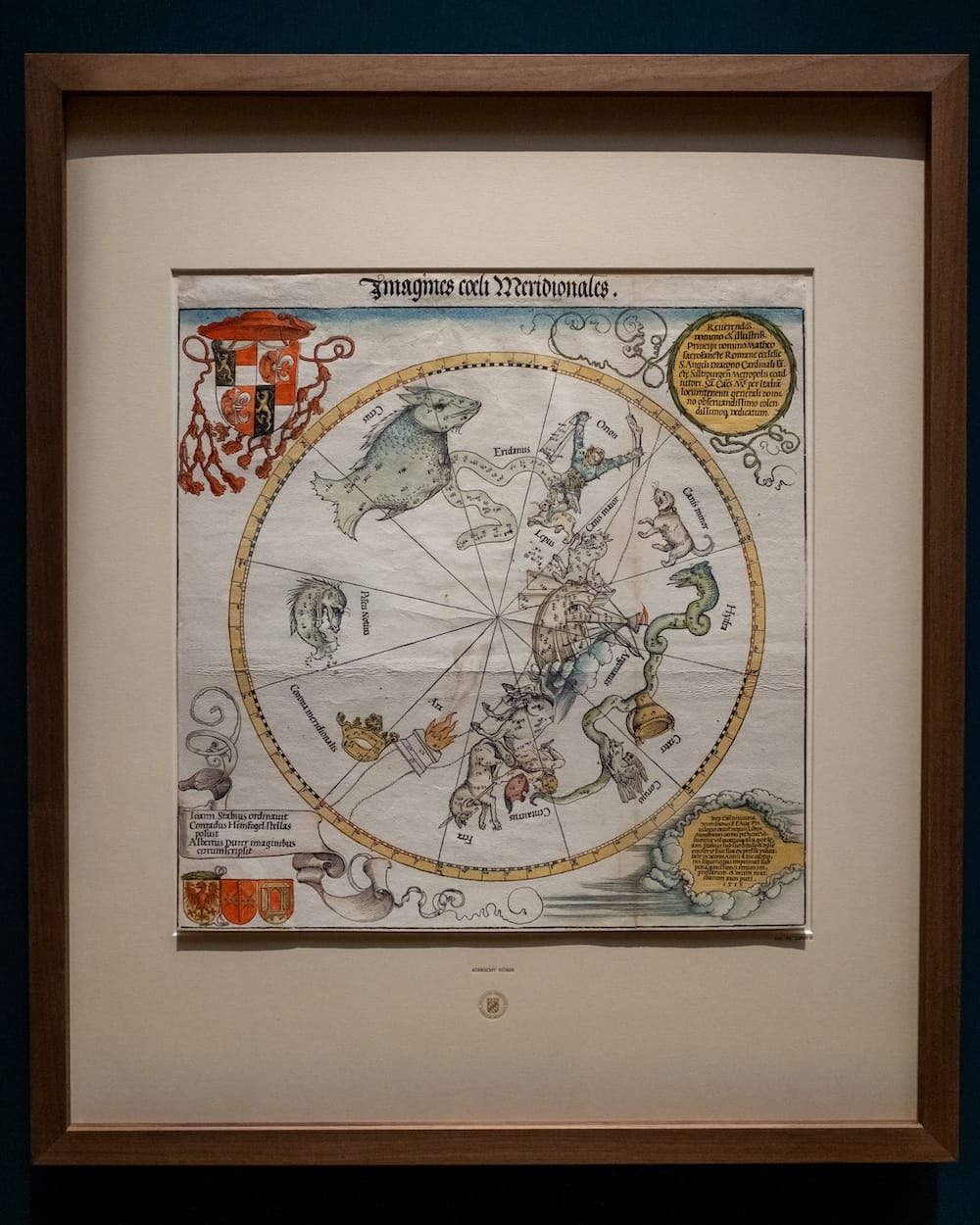
Vienna and its art museums had been on my bucket list for a long time. I’m glad I finally traveled to Vienna, because the Kunsthistorisches Museum, the Belvedere, the Albertina and the Leopold Museum are marvelous. Best of all there are far fewer visitors than in Paris or London. I spent more than five hours at the Kunsthistorisches Museum. I’ll include some of my personal highlights in a separate post.
While I was at the Kunsthistorisches Museum there was an exhibition, “Arcimboldo – Bassano – Bruegel: Nature's Time”, which focused on Renaissance representations of the four seasons and their symbolic, scientific, and cultural significance. Central to the show is Giuseppe Arcimboldo’s whimsical, nature-based portraiture, particularly "The Four Seasons in One Head". Arcimboldo’s imaginative allegorical portraits, made of fruits, blossoms, sea creatures, and more, offer a vibrant celebration of nature’s cycles and the classical elements. I greatly enjoyed seeing several paintings by Arcimboldo in one exhibition, because I only recall having seen two or three of his paintings on previous occasions.
Alongside Arcimboldo’s work, the exhibition features the famous seasonal cycle of Pieter Bruegel, who portrayed rural life and changing landscapes through scenes like “The Hunters in the Snow” and “The Return of the Herd”. His work captures the atmospheric shifts of the seasons with remarkable narrative detail.
The exhibition’s emphasis, both in terms of space and representation, lies with the lesser-known Bassano family, and includes a full twelve-month cycle by Leandro Bassano, merging biblical stories with scenes of agricultural life. This imbalance reflects the museum’s extensive Bassano holdings. Unfortunately, this is also the weakest section of the exhibition.


Albrecht Dürer, Maps of the Northern and Southern Sky (1515)
Still, the exhibition is thoughtfully supplemented by scientific instruments, tapestries, and works from other Renaissance masters, offering visitors a multifaceted view of nature’s role in 16th-century art. I particularly enjoyed seeing Albrecht Dürer’s meticulously detailed star charts and Gerhard Mercator’s groundbreaking globes. Even though the work of Bassano is overrepresented, the exhibition succeeds as a deep and enriching exploration of how nature shaped artistic expression during the Renaissance.
Arcimboldo, Bassano, Bruegel. Die Zeiten der Natur is at the Kunsthistorisches Museum in Vienna until 29. June 2025.